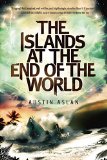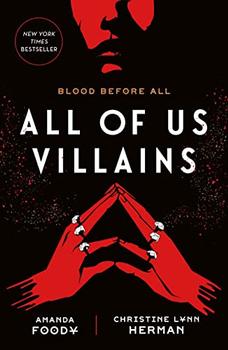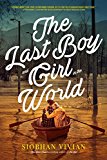Summary | Excerpt | Reviews | Beyond the book | Read-Alikes | Genres & Themes | Author Bio

The Naupaka is one of Hawaii's most common beach plants. It has large leaves and a most distinctive feature: clusters of white and purple flowers, which look like half of their petals are missing.  The legend surrounding the naupaka suggests that it is an incarnation of an ancient Hawaiian native separated from her lover and that it symbolizes people separated from their loved ones. Leilani, the central character in Austin Aslan's debut, has been separated from most of her family. At one point in her dangerous journey to find them she chances upon a naupaka plant and breaks off a branch covered in those famous half-flowers. "I want to see them so badly," she whispers.
The legend surrounding the naupaka suggests that it is an incarnation of an ancient Hawaiian native separated from her lover and that it symbolizes people separated from their loved ones. Leilani, the central character in Austin Aslan's debut, has been separated from most of her family. At one point in her dangerous journey to find them she chances upon a naupaka plant and breaks off a branch covered in those famous half-flowers. "I want to see them so badly," she whispers.
Sixteen-year-old Leilani lives in Hilo, on Hawaii's Big Island. She is hapa — half white and half-native Hawaiian, a recent transplant from California who feels like Hawaii has always been home. She holds a deep love and even reverence for the place, which Aslan portrays in gorgeous, clear detail: "The sun has set behind Mauna Kea. The purple silhouettes of the volcano's distant observatories jut above the sacred mountain like a crown. Clouds paint the bruised sky with broad strokes of orange." Leilani reads her Hawaiiana book voraciously; she wants to know every single thing there is to know about home. Maybe then she will fit in. Her grandfather says, "You are kama'aina. Child of the land. No one can take that away." But the other girls in her class don't think so.
As the novel opens, Leilani brings her treasured Hawaiiana book on a trip to Honolulu where she is being tested for a promising new epilepsy treatment — one that might finally afford her the privilege of driving a car. But shortly after she and her father arrive, strange things begin to happen. The cable connection fails in their hotel room. Wi-fi goes dead. The microwave has power but the popcorn bag Leilani's father puts into it flat, comes out the same way. And then, at the hospital, where Leilani is hooked up to all kinds of machines for tests, the medical equipment malfunctions.
What is going on? With carefully measured gifts of information, Aslan reveals that a global crisis is unfolding. Leilani's father is an ecologist with a sharp scientist's mind – a smart choice on Aslan's part because it allows for an organic flow of information to the reader about massive technological failure, tsunamis, the ecology of the Hawaiian islands and, most important, a bizarre green light hovering in the sky that is named the Emerald Orchid. The reader needs all these details as Leilani and her father realize the scope of the disaster they are facing and decide to find a way to get back home. Not an easy feat. And not a safe one, either. Public transportation is down, the military has begun to corral people into camps, and locals have begun to take the law into their own hands.
The Islands at the End of the World is full of harrowing action and adventure, all tied carefully to the Hawaiian landscape. Most fascinating is that Leilani is too. Her epilepsy is central to this connection; she hears voices during her seizures that echo bits and pieces of Hawaiian legend and mythology. Leilani realizes that their message might be critical to the global catastrophe that is threatening to end the world.
Aslan writes with a great sense of suspense. Narrow escapes, chases and action-packed confrontations flow across the pages. But there is more here than just adventure. Aslan creates a real bond between Leilani and her father, and a great respect grows between them as they trek through the islands to try to get home. "We're doing this together, okay?" Dad says. "We're right here with each other all the way through." So you root for them, not just because they are the good guys (which they are), but also because they are a symbol of the way love can expand and deepen, even under harsh circumstances. They are a symbol of the way that kind of love becomes home.
The Islands at the End of the World is the first of a two-book series and is recommended for young adults ages 12 and up.
Picture of Naupaka plant from aloha-hawaii.com
![]() This review was originally published in The BookBrowse Review in October 2014, and has been updated for the
September 2015 edition.
Click here to go to this issue.
This review was originally published in The BookBrowse Review in October 2014, and has been updated for the
September 2015 edition.
Click here to go to this issue.

If you liked The Islands at the End of the World, try these:

by Amanda Foody, Christine Herman
Published 2022
The blockbuster co-writing debut of Amanda Foody and Christine Lynn Herman, All of Us Villains begins a dark tale of ambition and magick...

The Last Boy and Girl in the World
by Siobhan Vivian
Published 2017
From the critically acclaimed author of The List comes a stunning new novel about a girl who must say goodbye to everything she knows after a storm wreaks havoc on her hometown.
Your guide toexceptional books
BookBrowse seeks out and recommends the best in contemporary fiction and nonfiction—books that not only engage and entertain but also deepen our understanding of ourselves and the world around us.